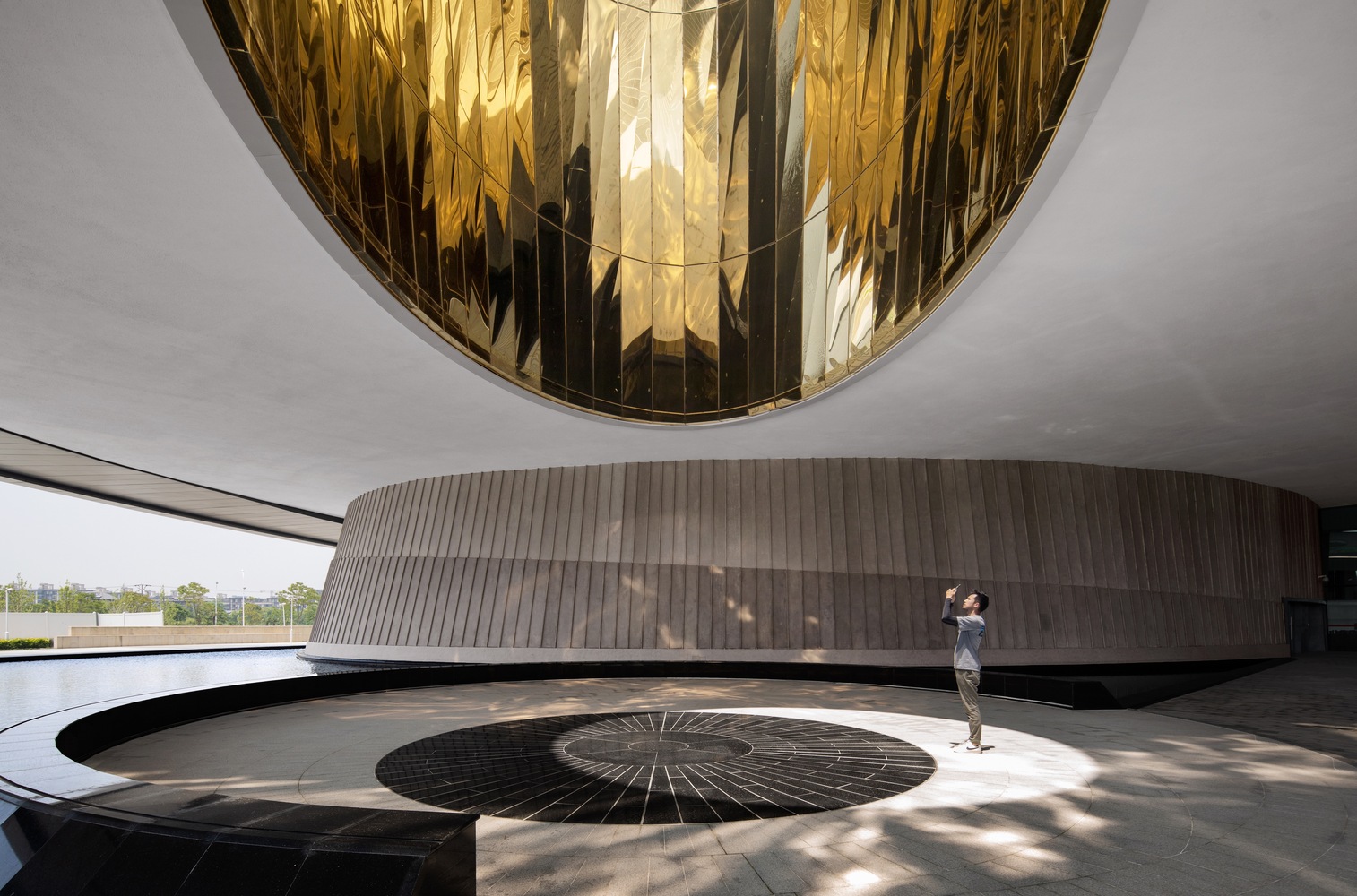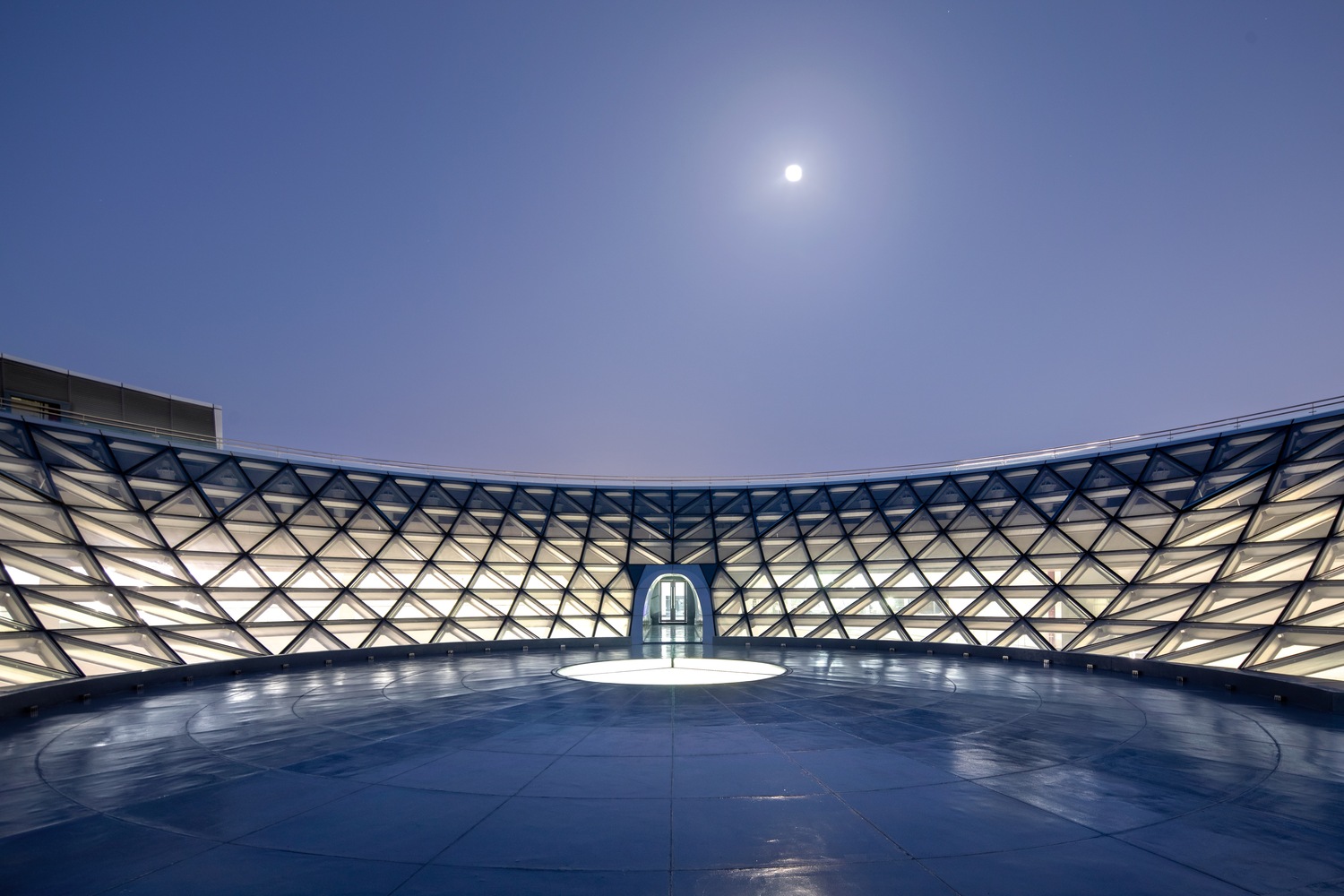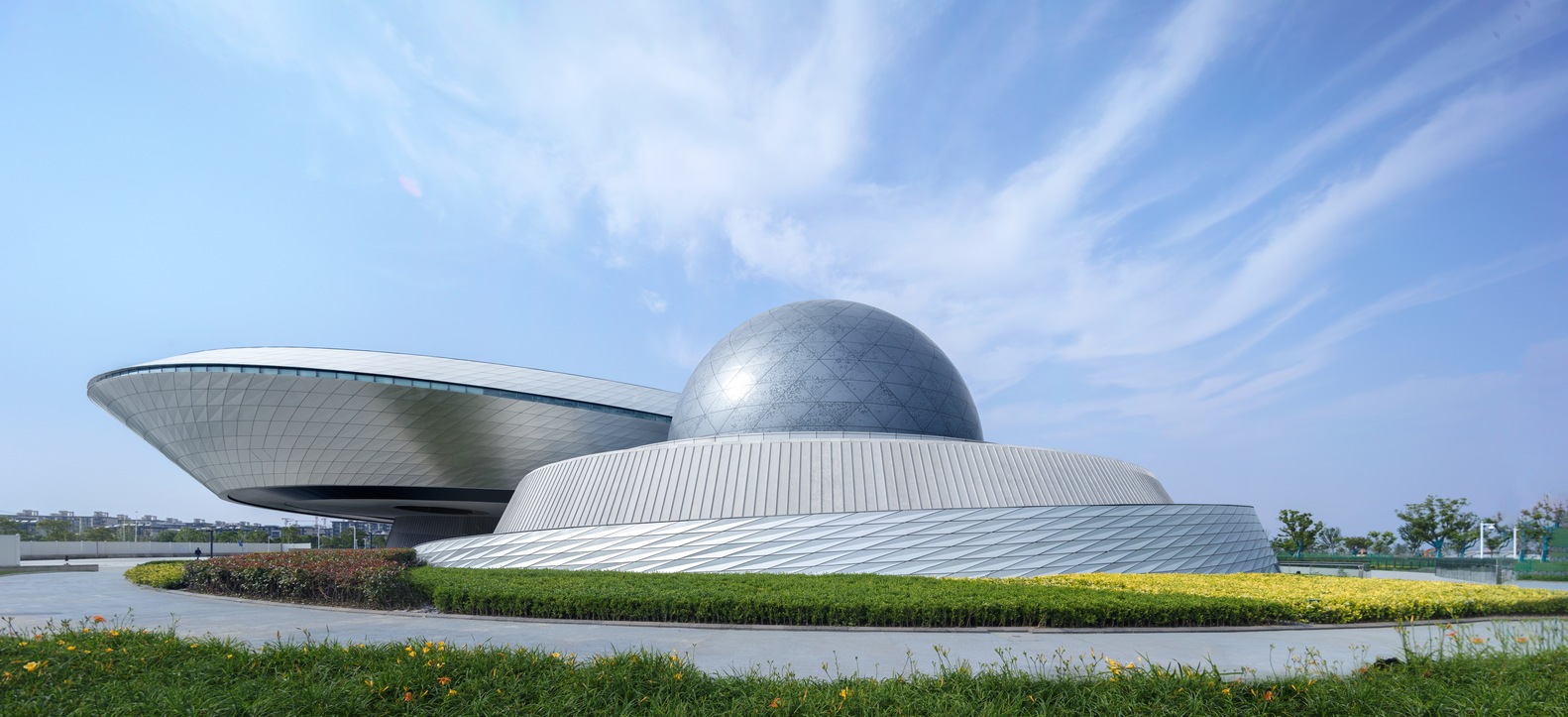To celebrate the continuum of space and time, an idea lifts off to form a monumental exploration. The Shanghai Astronomy Museum proficiently designed by Ennead Architects; presents a modern-futuristic and immersive museum; trailing to the past, and mirroring the rich history of Chinese astronomy and future space explorations.
Learn more about parametric and computational design from pioneers at the CD NEXT conference series:
Thomas Wong, Design Partner, Ennead Architects says “In linking the new Museum to both scientific purpose and to the celestial references of buildings throughout history, the exhibits and architecture will communicate more than scientific content: they will illuminate what it means to be human in a vast unknown universe.”
The Shanghai Astronomy Museum exudes its visitors on an unswerving rendezvous with real astronomical phenomena. As the design curves, swirls and slices in staggering scales, flamboyant forms, and streaking natural light into the building interiors, it heightens with a majestic zeal and rapturous awe. Upon the fundamental relationship study of the sun and the earth’s orbital motion, the architects crafted an innovative way to usher in the various expressions dashed by the sun. Covering 420,000 square feet and being the largest museum worldwide the new astronomical branch of the Shanghai Science and Technology Museum is solely dedicated to the study of astronomy.
The expressive design draws inspiration from astronomical principles, invoking various experiences into structuring the building. Three principal forms stack the entire edifice; the Oculus, the Inverted Dome and the Sphere. They act as functioning astronomical instruments, tracking the sun, moon, and stars. The conception also reminds us about our beginning, how time for humans originated from exploring the distant astronomical objects.
As you enter, a magnanimous suspended oculus sparks our intrigue, and it shows the passage of time by tracking a circle of sunlight across the ground floor entry plaza and reflecting pool. During the summer solstice, at noon it shines a full circle, aligning with a circular platform within the entry plaza. The Oculus weaves a veritable timepiece placed upon the civic square.
A globous sphere houses the planetarium theatre, partially submerged into the building. Structurally expressed with minimal supports, it evokes an illusion of weightlessness or anti-gravity. The pure spherical expression references the primordial shapes in our universe and, the orientation we yield from our position relative to the sun or moon. This offers an ever-present reference point for the visitor. The sphere springs its shape not only from the programmatic element but an abstract manifestation of a primary celestial form. The entire structure embeds the roof plane of the lower Museum wing, then gradually rises out of the Earthbound horizon, emerging into view as one circle the building. The drama unfolds as if you are approaching a planet from one of its moons, allowing you to experience it as a weightless mass from beneath.
The Inverted Dome comprises a large inverted glass tension structure pinnacle atop the central atrium of the building. Being stacked on the roofline enables visitors to occupy the glass dish centre with an unimpeded view of the sky. The journey culminates in this space, slashing the view of the horizon and adjacent urban context, and streaming our focus to the all-encompassing sky. Expressed as a whimsical encounter with the universe to conclude the simulated experience within. A 720-degree spiralling ramp inside the Museum and underneath the Inverted Dome traces the orbital flow of the visitor, taking sequence by sequence as the Museum exhibits and launches to gaze upward to its apex.
The Shanghai Astronomy Museum sits within an expansive green zone, inculcating a host of buildings and programming within temporary and permanent exhibits. The museum also incorporates a 78-foot solar telescope, an observatory, an optical Planetarium, Education and Research Center, and Digital Sky Theater. The space exhibit features immersive environments, artefacts and instruments of space exploration, and educational exhibits.
Elevating the scientific and technological capabilities of the Shanghai Science and Technology Museum and serving as a museum for enhancing universal perspective, the Shanghai Astronomy Museum fashions a landmark structure and civic centre within the developing Lingang area.
Project Details
Architects: Ennead Architects
Area: 39000 m²
Location: Shanghai, China
Photographs: Arch-Exist
Lead Architect: Thomas Wong
Design Team: Thomas Wong, V. Guy Maxwell, Grace Chen, Wei Wei Kuang, Charles Wolf, Anthony Guaraldo, Jorge Arias, Margarita Calero, Michael Caton, Christina Ciardullo, Eugene Colberg, Regina Jiang, Jörg Kiesow, Aidan Kim, Stefan Knust, Xinya Li, Francelle Lim, Xiaoyun Mao, David Monnar, Nikita Payusov, James Rhee, Yong Kyun Roh, Miya Ruan, Na Sun, Eric Tsui, Stephanie Tung, Charles Wong, David Yu, Fred Zhang
Client: Shanghai Science and Technology Museum
Local Design Institute: Arcplus Institute of Shanghai Architectural Design & Research











































Leave a comment